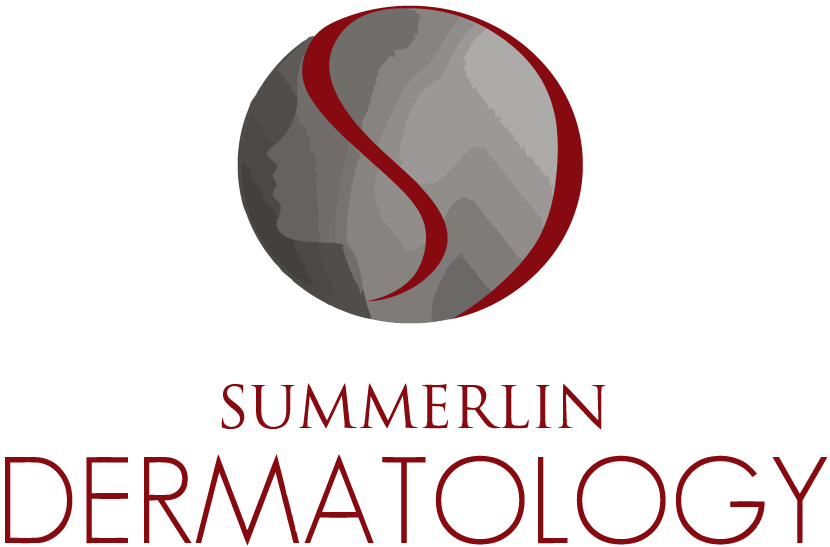About Keratosis Pilaris
Keratosis pilaris is a harmless rash (and genetic condition) that manifests as tiny discolored bumps around the hair follicles on the cheeks, upper arms, thighs and/or buttocks. These bumps typically resemble small pimples and can create a coarse texture on the affected area. Some say this skin condition also resembles the look of goosebumps. Though there is no direct cure for keratosis pilaris, there is treatment available to reduce its appearance. Usually those with dry skin, who live in a dry climate, or swim often suffer from this skin condition. People of all ages can get keratosis pilaris, but it is common in children and young adults. Keratosis pilaris is also common among those who additionally suffer from eczema. At Summerlin Dermatology in Las Vegas, NV, Dr. Reuel Aspacio can assist with diagnosing this condition and minimizing the symptoms.
Most people do not even know they have the condition until they move to a dry, arid environment such as Las Vegas. The mainstay of therapy is keeping the skin moist and hydrated. When this fails, we at Summerlin Dermatology may be able to help you using a professional-grade medical skin care regimen, prescription creams, microdermabrasion, HydraFacialMD, and/or chemical peels.
Other Types of Keratosis
Actinic keratosis
Actinic keratosis (AK) is a small, rough spot occurring on the skin as a result of chronic sun exposure. They are usually red in color, but may be dark brown and associated with sensitivity when touched. Also known as solar keratosis, actinic keratosis may lead to skin cancer. The key to management of actinic keratosis is prevention. Daily use of sunscreen and a sun protection device minimize the development of actinic keratosis. Treatment options include topical medications such as imiquimod, ingenol mebutate, and five fluorouracil. Procedures are also available — cryotherapy, photodynamic therapy, photofacials, and medical-grade chemical peels.
Seborrheic keratosis
Also known colloquially known as "barnacles," seborrheic keratosis (SK), are flesh-colored to dark lesions on the trunk, face, scalp, and extremities. Some doctors may mistake them to be moles. These are noncancerous lesions and many opt to observe them. Dermatosis papulosa nigra is a form of seborrheic keratosis typically located on the face primarily around the eyes of patients of color. Although seborrheic keratosis is benign, development of multiple lesions in a short period of time may be a sign of internal malignancy. The lesions of seborrheic keratosis do not require any treatment. However, if the lesions are irritated or cosmetically unappealing to you, they may need treatment for a number of ways.
Keratosis Pilaris Reviews
Known Causes
Keratosis pilaris is caused by the buildup of fibrous proteins called keratin, which protects the skin from infection. Keratin is produced near the hair shaft just under the skin. The spots formulated on the skin are irritated hair follicles. This irritation of the swollen hair glands results in a production of small bumps on the surface of your skin. Keratosis pilaris is not contagious and is thought to be an inherited skin condition. It is commonly seen among those who also suffer from eczema, dry skin, hay fever, or asthma.
Presenting Symptoms
Keratosis pilaris can occur at any age, but it's more common in children. Signs and symptoms include:
- Painless tiny bumps typically on the cheeks, upper arms, thighs, or buttocks
- Dry, rough skin on the areas with bumps
- Worsening when seasonal changes cause low humidity and dry conditions
- Sandpaper-like bumps resembling gooseflesh
Treatment Options
Dr. Aspacio can prescribe a 7 – 10-day course of a medium potency, emollient-based steroid cream to be applied once or twice every day to address the red bumps. Once the inflammation has ceased, the rough bumps may be treated with a routine prescription of either 2 – 3% salicylic acid or 20 – 40% urea cream. Intermittent dosing of topical retinoids (e.g., weekly or biweekly) seems to be quite effective and well tolerated. After the initial clearing up with stronger medications, patients may then be placed on a milder maintenance program.

Related Procedures
Smoother Skin, Superior Care
Even though keratosis pilaris is not painful, the appearance of it on the skin can be embarrassing. Don't allow this condition to control your self-confidence when there are various treatments available to help improve its appearance. Our exceptionally skilled staff at Summerlin Dermatology can help diagnosis keratosis pilaris and lead you on the road to smoother skin. Contact our office today to schedule your consultation or to learn more.























